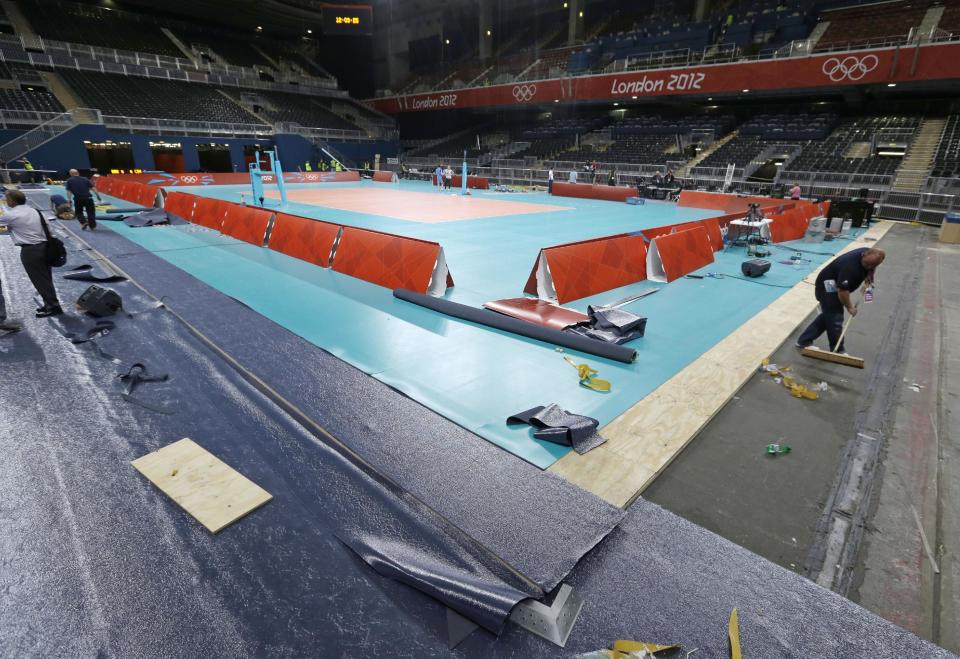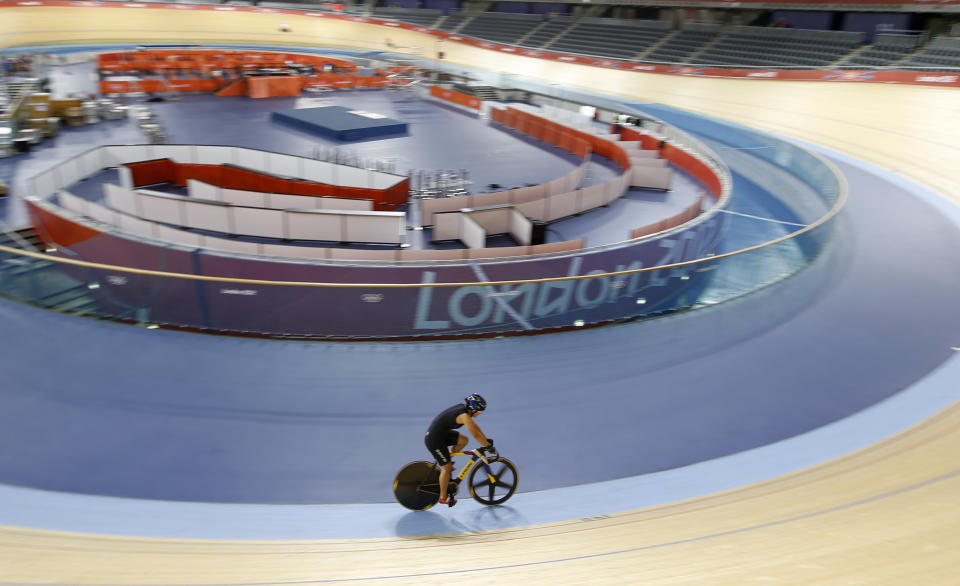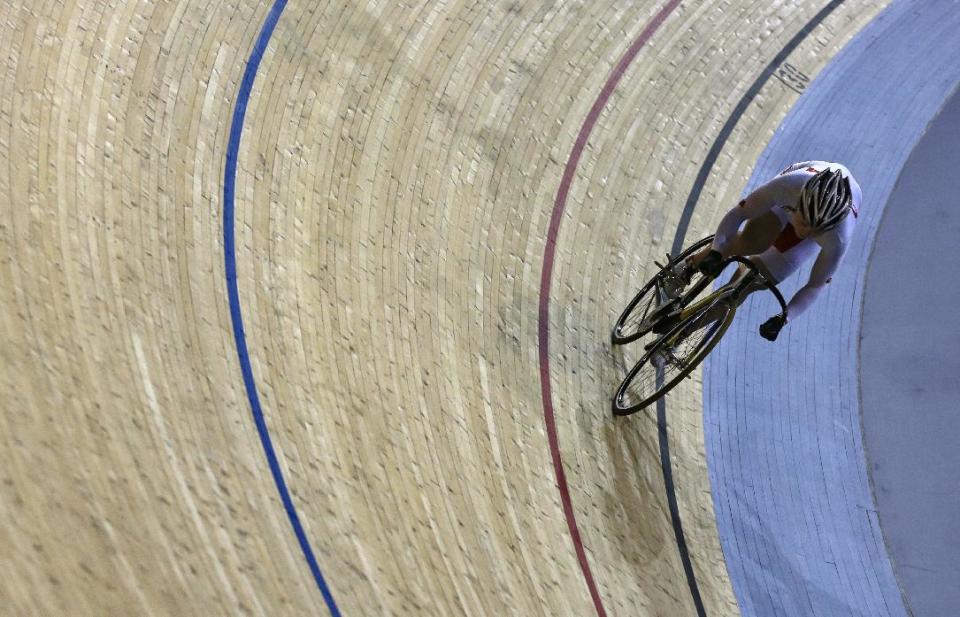Architects faced double challenge for London 2012
LONDON (AP) — When the world tunes in for the London Olympics opening ceremony Friday night, viewers will judge the new Olympic Park on whether it provides a spectacular backdrop for the world's finest athletes.
But for residents, the park will be gauged on whether it becomes an integral part of the British capital, providing not just sporting facilities but also housing, jobs and transport links for decades to come.
That's been the challenge for the architects trying to transform a derelict site into a showcase: How to dazzle the multitudes (who fondly remember the spectacular Bird's Nest stadium from the 2008 Beijing games) while creating a viable, new London neighborhood from scratch?
Philip Johnson, a principal architect with Populous who worked on the master plan, the Olympic Stadium and other venues, said there was no trade-off between the designers' need to focus on the "legacy" aspect while still creating a park that looks and feels inspiring.
"With something as prestigious as the Olympic games, we're always looking to wow the public," he told The Associated Press. "I think we'll see the impact Friday night. But the legacy will evolve over time, two years, 10 years, 30 years. I think success will be defined by how the local community judges it. Do these links actually work? Do people use it?"
The project was extremely ambitious, he said, because it required designers to work with a site that was crisscrossed by roads, unused railroad lines and polluted waterways and littered with junked cars and thousands of discarded tires.
"It was something of a mess," he said. "It took quite a leap of imagination to see how this could develop. It was disconnected from the rest of London, that made it very hard to knit together."
To that end, the Olympic park features new pedestrian bridges and cleaned-up waterways that give it a pleasant, tranquil feel.
Plans for the future are in place: The media center is set to be turned into a high-tech office building expected to provide employment, and the athletes' village will become a mix of subsidized and free-market housing. Commuters, meanwhile, will rely on the many new transit links that provide fast service to many parts of London.
These are in addition to the permanent venues, including the welcoming Olympic Stadium, the spectacular Velodrome with its distinctive double-curved roof, the Aquatics Center and the Copper Box, which will be used for handball and fencing.
Some sporting sites, like the basketball arena, are designed to be dismantled and shipped out after the games — perhaps to show up at the Rio Olympics in four years times — while others will be downsized for community use.
The site has an English feel. It's extensively planted with wildflowers, perennials and special wetland plants expected to thrive along the cleaned up River Lea, providing a bit of a haven in a capital city long renowned for its grand royal parks.
There is no unifying design to the buildings. Richard Burdett, a London School of Economics professor of urban studies who advised Olympics officials, said there was no attempt to impose a single vision on the architects.
"There were no design-thought police," he said. "There was no sense it should all be curvy and white or all flat and red. It is more fragmented and organic. The sense that it doesn't all hang together is part of it. It doesn't try to introduce top down a piece of Manhattan, like Canary Wharf does, or a piece of Paris."
Does the whole thing work?
Some architects and architectural critics have been skeptical, calling the look and feel ho-hum, but the final touches — the landscaping in particular — seems to have won many over. The stadium has already garnered some awards and been shortlisted for the prestigious Royal Institute of British Architects Stirling Prize, while the overall plan is seen by many as having created an inviting new park in what was, literally, a wasteland.
"I think long term it will be very valuable," said Oliver Wainwright, critic for Building Design magazine. "It kind of lacks the iconic glamour of Beijing but it fits in with these slightly more austere times. It was built on the promise of legacy, on what will happen after the event. There's a lot of compromises for the games itself, all made with the longer term in mind."
The idea of using the Olympics as a springboard for reviving this droopy east London setting may be laudable social engineering, but planners are aware that goals may be undercut if the area is not dynamic enough to grow on its own.
Despite the gleaming new shopping Westfield mall — Europe's largest — and the area's expanded railway stations, it could easily decay again if the surrounding neighborhood is blighted by joblessness and other ills.
Prominent architect Piers Gough, who is not connected to the project, said he doesn't expect the area to decline once the games end unless the British economy itself suffers a major breakdown.
"I really think the massive embarrassment of other Olympics, which has seen a sort of dead zone afterwards, has been avoided here, unless the whole economy implodes," he said. "I don't see why it shouldn't be a rolling program of regeneration."
He said some of the details — like the park's new bridges — have been beautifully engineered and called new buildings like architect Zaha Hadid's curvaceous Aquatics Center truly remarkable.
"Initially I thought the park was a bit harsh, a bit Eastern bloc, but the landscaping has really brought it together and made it luscious," he said. "The way it has so many levels and goes down to the rivers and the canals has been very clever and makes a great Olympics site. I'm impressed."
The general praise for the site stops, abruptly, at the perimeter of the Orbit Tower, a freeform red steel structure designed by artist Anish Kapoor. Many in the architectural world view the tower — funded largely by Lakshmi Mittal, one of Britain's most successful entrepreneurs — as an ego-driven eyesore in a park that is otherwise somewhat understated.
"It's awful, terrible," said Gough. "It really upsets me. "





